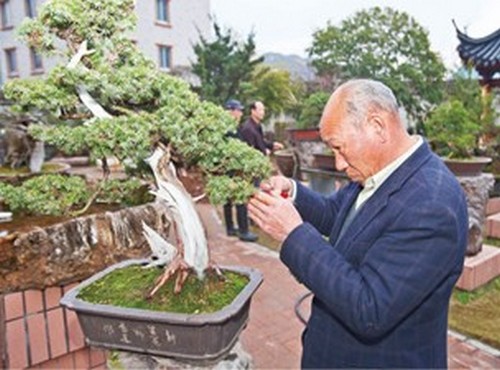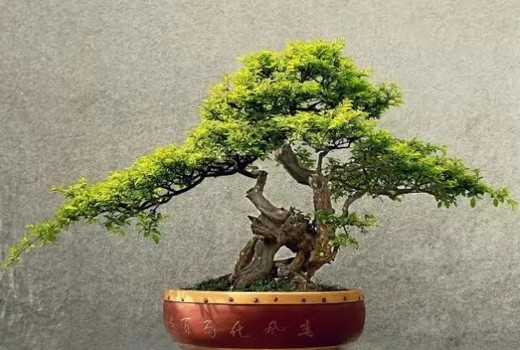Propagation and cultivation of primrose bonsai
Primrose, also known as Jinmei and Little Yellow Flower, gets its name because it blossoms earliest among flowers and ushered in spring when a hundred flowers bloom immediately after flowering. Together with plum blossoms, daffodils and camellias, they are called four friends in the snow, and they are one of the precious flowers in China. Primrose is not only beautiful in color, extraordinary temperament, but also has the characteristics of fearless, no choice of style and strong adaptability, which has always been loved by people.

The propagation of Yingchun can use a variety of methods such as ramet, striping and cutting. Ramets are usually carried out in spring and autumn, but it is better before flower buds germinate in early spring. Striping or cuttage is usually carried out in about a week after the flower fade. When pressing the strip, first cut it with a knife in the cortex of the buried branch to facilitate rooting. Cuttings can be carried out in the hotbed or directly in the open field. Choose 2-year-old strong branches as cuttings with a length of 15 cm to 20 cm. Bury the branches of 1 stick 3 in the soil, keep the soil moist, and take root in 2 to 3 weeks. When the young roots change from white to yellowish brown, start transplanting. At the initial stage of seedling transfer, shade net or Reed curtain should be used to shade for 5 to 7 days, and the seedling rate is higher.
Potted primrose is potted after defoliation in winter to before germination in spring. The pot soil should be watered thoroughly with loose and fertile sandy soil with good drainage and water retention, and preserved in a place away from the wind and the sun. Watering during the growing period should not be dry or irrigated, but it should be watered thoroughly to avoid stagnant water in the basin soil, otherwise it would cause rotten roots.
The rotten organic liquid fertilizer should be applied once or twice every spring to supplement the nutrients consumed by flowering and restore the plant growth as soon as possible. The period from June to August is the flower bud differentiation period, which can increase the use of phosphorus and potassium fertilizer and pay attention to water deduction, which is beneficial to the formation of flower buds. Fertilization in autumn can increase the cold resistance of plants and promote the development of flower buds. Applying some fertilizer before flowering can not only make the flowers fat, but also prolong the flowering period.
The pot is turned once after the flower fade in spring every year to 2 years, and the basin soil can be mixed with garden soil, humus soil and sand soil, and a small amount of mature cake fertilizer and livestock manure are added as base fertilizer, and the plant is pruned in combination with changing pots. Remove dry and withered branches, disease and insect branches, and pay attention to coring during the growing period, so as to promote the plant to be more branched and maintain the perfection of the tree shape. Watering should be reduced after September to control the growth of branches and make them survive the winter safely.
Time: 2019-06-12 Click:
- Prev

Modeling method of juniper bonsai
The so-called juniper shape, that is, through the production process of binding, tying, twisting, pinching, pulling, thinning, and shearing, a plain juniper is made into a vibrant shape, such as lion, tiger and other animals; pavilions, buildings, and other buildings; aircraft, rockets and other popular science shapes. These short ones are about feet, and the high ones are several meters high.
- Next

Fertilization principle of sparrow plum bonsai
Sparrow plum is one of the seven sages of bonsai and is very favored by bonsai friends. In order to raise sparrow plum bonsai well, we should mainly pay attention to five aspects: water, fertilization, basin soil, pruning and pest control, among which fertilization is very important. Sparrow plum bonsai fertilizer should be paid attention to, too much fertilizer, branches and leaves grow, lack of fertilizer, the branches are thin and weak.
Related
- Fuxing push coffee new agricultural production and marketing class: lack of small-scale processing plants
- Jujube rice field leisure farm deep ploughing Yilan for five years to create a space for organic food and play
- Nongyu Farm-A trial of organic papaya for brave women with advanced technology
- Four points for attention in the prevention and control of diseases and insect pests of edible fungi
- How to add nutrient solution to Edible Fungi
- Is there any good way to control edible fungus mites?
- Open Inoculation Technology of Edible Fungi
- Is there any clever way to use fertilizer for edible fungus in winter?
- What agents are used to kill the pathogens of edible fungi in the mushroom shed?
- Rapid drying of Edible Fungi

